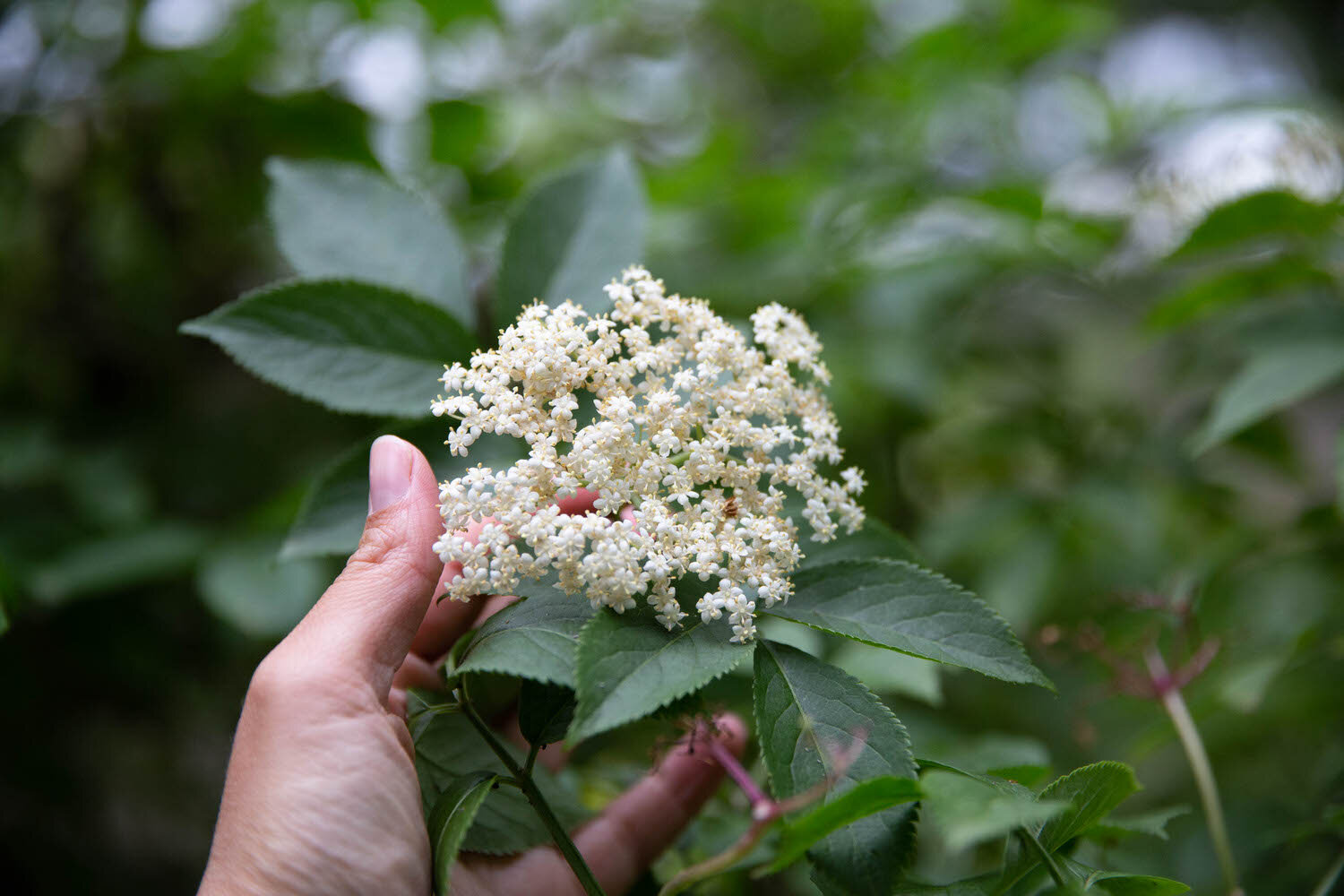Foraging for Elderflowers
How to forage for elderflowers
Foraging for elderflowers is one of our favourite early Summer traditions. It’s the perfect excuse to have a long walk in the (hopefully!) gorgeous weather, picking off some of the best-smelling blooms from our favourite trees.
My friend Rosie first introduced me to elderflower foraging when we were in university in Sheffield together. I have very fond memories of a big group of us traipsing around our local park in search of the fragrant blooms – and it’s a tradition we love to continue now with our tot in tow…
Elderflowers can be made into all sorts of delicious things such as sorbets, jellies and cakes; but my favourite way to use them has to be making elderflower cordial. As the name suggests, elderflowers come from elder trees. They are relatively distinctive if you’re new to foraging for them. Here are some tips to make sure you get the best blooms.
Identifying elder trees
Elders (Latin name Sambucus) are a common low-growing large shrub or small tree. They’re often grown in gardens, but you can also find them in parks, in sunny hedgerows and growing on waste land too.
The tree flowers in late May to early June (the exact timing depends on where you are in the country and how warm the weather has been…) It produces masses of creamy-white umbelliferous flowers: these are flowers that are all held out on little flower stalks (botanically known as pedicels) to the same height, so all of the small flowers appear as one large, flat topped bloom. If you look closely at all of the small individual flowers, each one has five tiny petals.
It’s the only tree that has flowers like this, so check the pictures, and check that the flowers you’ve found are growing from a tree, and this should be good!
The bark of the tree tends to look quite old and gnarled, it’s a grey-brown colour, and has plenty of furrows in it, for extra identification (include photo). The leaves can be green, as on a common elder, or reddy-purple, as on the popular garden shrub Sambucus nigra.
Avoid similar-looking flowers
There are a couple of other plants that may be flowering at the same time, with similar looking flowers, most common are cow parsley and ground elder.
These both flower from green-stemmed plants that grow directly out of the ground (rather than the woody shrub / tree, that the elder is) so you should be able to tell which is which. Additionally, cow parsley smells quite unpleasant (a bit like wee!) so wouldn’t be hugely nice as a drink!
How to pick
It’s best to pick from trees on a bright, sunny day. Pick the freshest looking, sweetest smelling flowers you can find. The smell of the flowers is an indicator of what your cordial will taste like, so make sure you choose only the perfect blooms!
Take a pair of secateurs or flower snips with you, and cut the entire flower head just below where all of the individual flower stalks join the main stem.
Try to cut from healthy trees, with plenty of blooms, and only take a few from each tree. It’s really important to leave enough for bees and butterflies, and so that the blooms can turn into elderberries, which are an important source of food for birds and small mammals in the Autumn.
We have a few favourite trees that we return to every year to check on!
Storing the blooms
As soon as you cut the blossoms, put the flowers straight into a cotton bag.
Use them as quickly as you can after picking - if they’re left to sweat in a hot car boot or plastic bag they will quickly turn unusable.
When you get them home, discard any twiggy bits or flowers that may have started to go brown. Give each flower a good shake to get rid of any creepy crawlies and then give the flowers a quick rinse under the cold tap.
What to make?
Our very favourite thing to make is elderflower cordial.
It’s super simple and incredibly delicious. You can find our recipe here: elderflower cordial.
Once you’ve made cordial, you can then use that in other equally mouth-watering recipes too! Elderflower ice cream (churned from a mix of cordial, yoghurt and sugar) is really delicious. Or add the cordial to virgin drinks or cocktails. A dash of elderflower cordial in a glass of prosecco is especially good…
Other recipes include jams (gooseberry and elderflower is a really excellent combo), elderflower fritters where the whole head is lightly battered and then fried, elderflower cake, and even elderflower-infused salad dressings.
We’d love to see any creations you’ve made with foraged elderflowers!
Tag us on social media to share…







